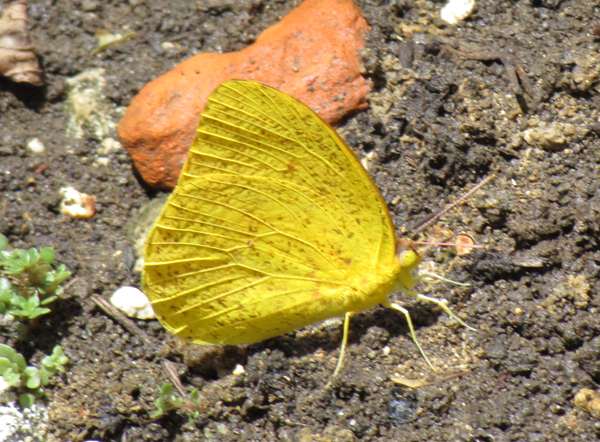Cloudless Sulphur Butterfly - Phoebis sennae
Phylum: Arthropoda - Class: Insecta - Order: Lepidoptera - Family: Pieridae

In the Carribbean, these conspicuous large butterflies can be seen nectaring on Bougainvilea, Hibiscus and Lantana as well as many other tropical flowers.
The wings of males are sulphur yellow, while females are more of a lemon yellow. the wingspan ranges from 6.3 to 7.8cm, with females slightly larger than males, as is very common with butterflies.

Distribution
Breeding throughout most of South America and the southern half of the USA, with some adults migrating through the northern states of the USA and into Canada, this lovely butterfly also occurs the West Indies including Barbados, where this photograph was taken in late April.
Lifecycle
The larval foodplants are Cassia (senna) species in the family Fabaceae, from which the specific epithet is derived.
In the tropical climate of the Carribbean these butterflies breed all through the year, whereas in more temperate northern or southern countries their emergence coincides with summer.
Studying butterflies and moths...
Excited at the prospect of flyfishing? So are we, and we're pretty sure you would find the Winding River Mystery trilogy of action-packed thrillers gripping reading too. Dead Drift, Dead Cert, and Dead End are Pat O'Reilly's latest river-and-flyfishing based novels, and now they are available in ebook format. Full details on our website here...
Buy each book for just £4.96 on Amazon...
Please Help Us: If you have found this information interesting and useful, please consider helping to keep First Nature online by making a small donation towards the web hosting and internet costs.
Any donations over and above the essential running costs will help support the conservation work of Plantlife, the Rivers Trust and charitable botanic gardens - as do author royalties and publisher proceeds from books by Pat and Sue.
